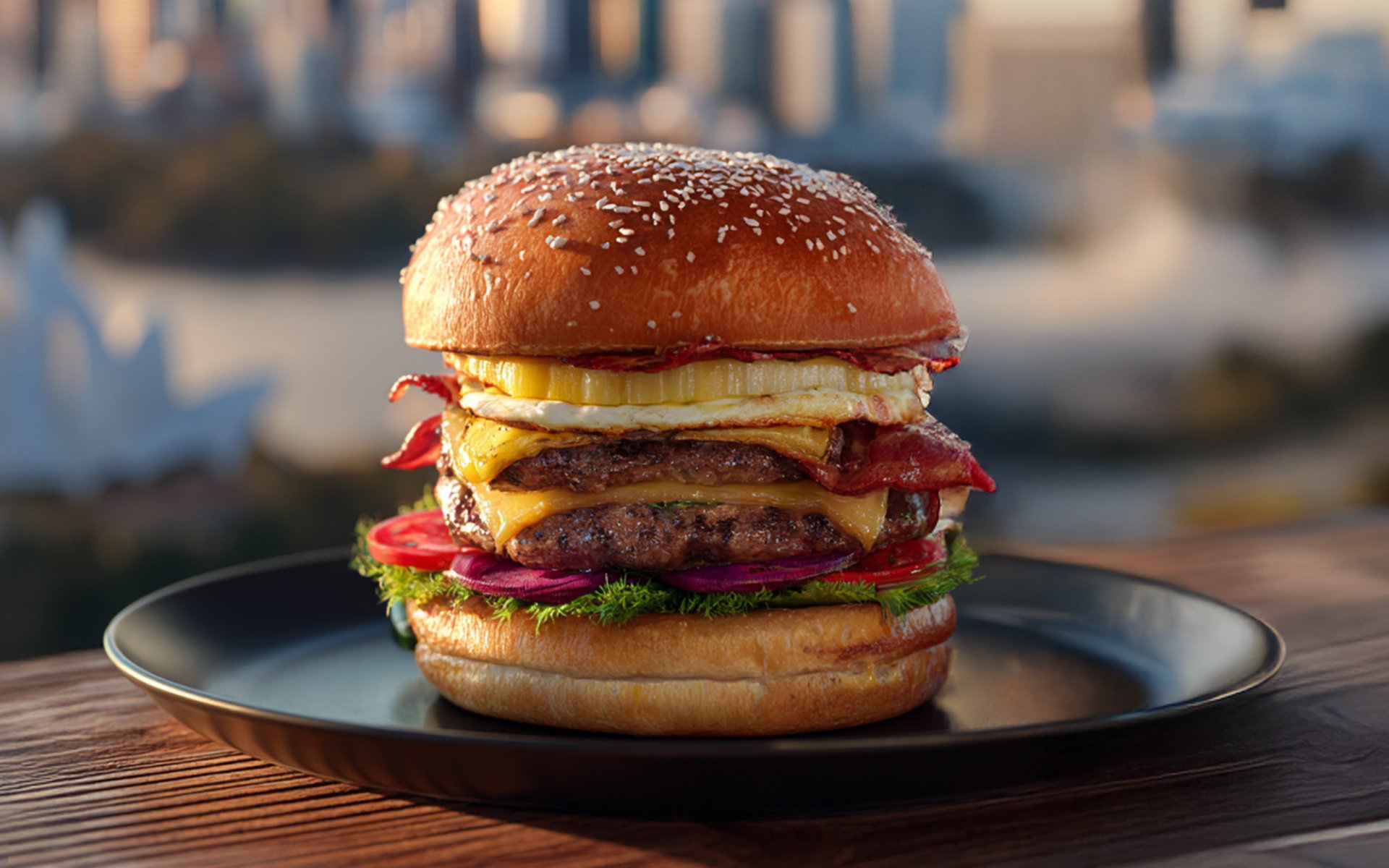Aussie Burger With The Lot
Last updated: 3 Oct 2025

The Aussie Burger With The Lot is a truly iconic Australian-style burger, packed with everything as its name suggests. It is renowned for its size, abundance of toppings, and distinctive flavors.
It wasnt until the 1930s that burgers arrived in Australia, partly due to increased international trade and cultural exchange after World War I.
Greek immigrants played a major role in introducing American-style food to Australia. They opened small restaurants and cafés that served burgers, French fries, milkshakes, and other American classics.
Over time, Australians adapted and transformed the burger into their own unique style. The addition of beetroot slicessomething rarely seen in burgers outside Australiaset it apart. Fried eggs, bacon, pineapple, and fresh vegetables like lettuce and tomato soon followed. With all these extras piled high, Australians began calling it the Aussie Burger With The Lot.
Another explanation is more practical: during and after wartime, Australia produced large quantities of beetroot, which was affordable and widely available, making it a natural addition to meals, including burgers.
Although the idea of adding beetroot and pineapple to a burger might seem unusual to outsiders, for Australians these ingredients are what make the burger special and unmistakably unique.
What Makes It With The Lot?
The base of the Aussie Burger With The Lot usually includes a beef patty, bacon, fried egg, cheese, lettuce, tomato, and onion. But what makes it authentically The Lot, Australians say, are the additions of pickled beetroot slices and pineapple rings, which add a tangy-sweet contrast to the salty and savory ingredients.The Journey of the Burger
Burgers originated in the United States in the late 18th century, beginning in Texas with the simple idea of placing a Hamburg steak between two slices of bread for convenience. The concept quickly gained popularity and evolved into the modern hamburger we know today.It wasnt until the 1930s that burgers arrived in Australia, partly due to increased international trade and cultural exchange after World War I.
Greek immigrants played a major role in introducing American-style food to Australia. They opened small restaurants and cafés that served burgers, French fries, milkshakes, and other American classics.
Over time, Australians adapted and transformed the burger into their own unique style. The addition of beetroot slicessomething rarely seen in burgers outside Australiaset it apart. Fried eggs, bacon, pineapple, and fresh vegetables like lettuce and tomato soon followed. With all these extras piled high, Australians began calling it the Aussie Burger With The Lot.
Why Beetroot?
There are several theories about how beetroot became part of the Aussie burger. One popular story suggests that during the 1950s, Australians jokingly added beetrootsweet, earthy, and vividly redto burgers as a prank on visiting American soldiers. Unexpectedly, people loved the flavor combination, and it soon became a permanent fixture.Another explanation is more practical: during and after wartime, Australia produced large quantities of beetroot, which was affordable and widely available, making it a natural addition to meals, including burgers.
Key Ingredients of the Aussie Burger With The Lot
The phrase With The Lot means loading a burger with everything possible. Essential components include:- A beef patty (sometimes kangaroo meat is used in Australia)
- Fresh lettuce and tomato
- Cheddar cheese
- Pickled beetroot slices
- Crispy bacon
- A fried egg with a slightly runny yolk
- Fresh or canned pineapple
- Tomato sauce, mayonnaise, and mustard
- Lightly toasted burger bun for extra crunch
A True Symbol of Australia
Today, the Aussie Burger With The Lot has become a national icon, much like Vegemite or the kangaroo. It is more than just foodit is a symbol of true Aussie identity.Although the idea of adding beetroot and pineapple to a burger might seem unusual to outsiders, for Australians these ingredients are what make the burger special and unmistakably unique.
Tags :
Related Content
Getting to Know Pigs in Blankets One of the Most Popular Christmas Dishes in the United Kingdom
Tracing the History of Cranberry Sauce A Dish of Great Significance for Thanksgiving


